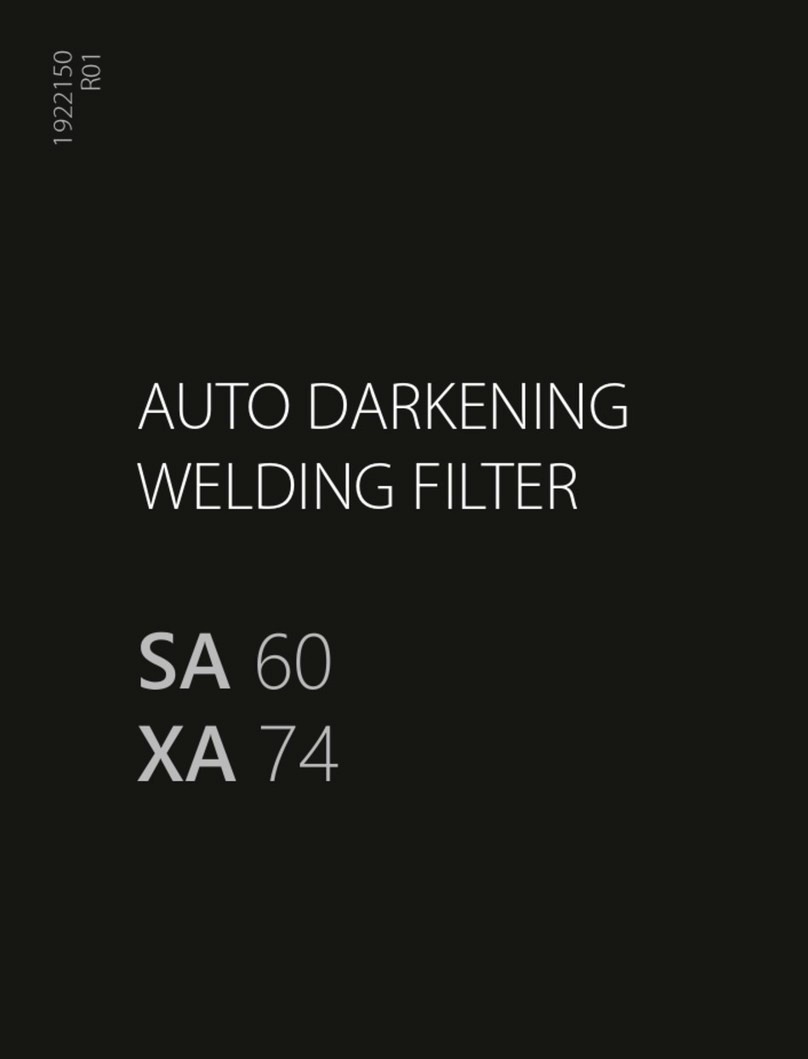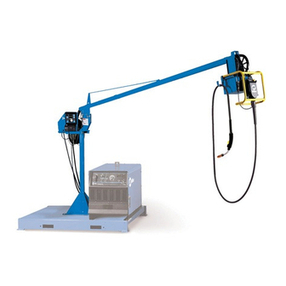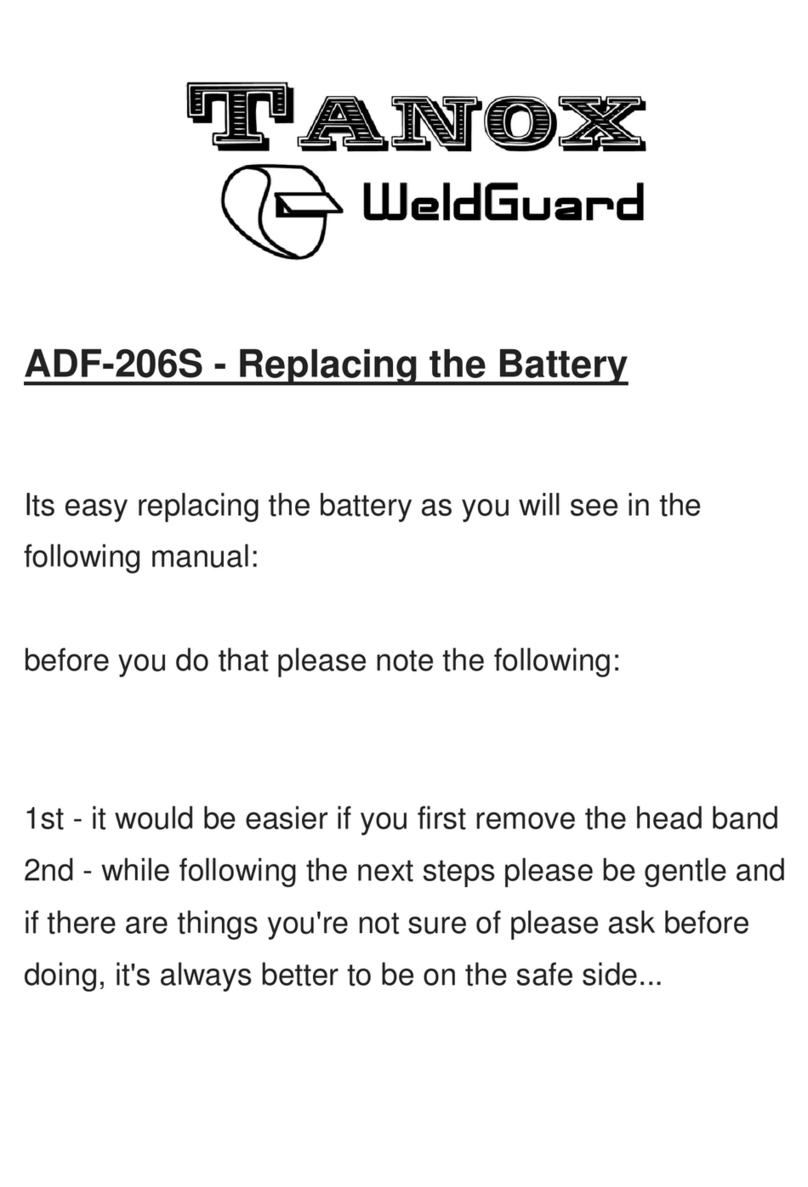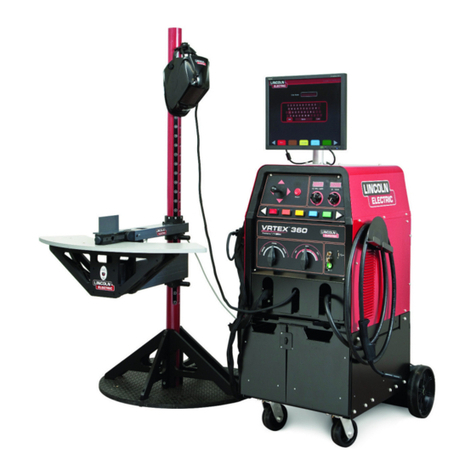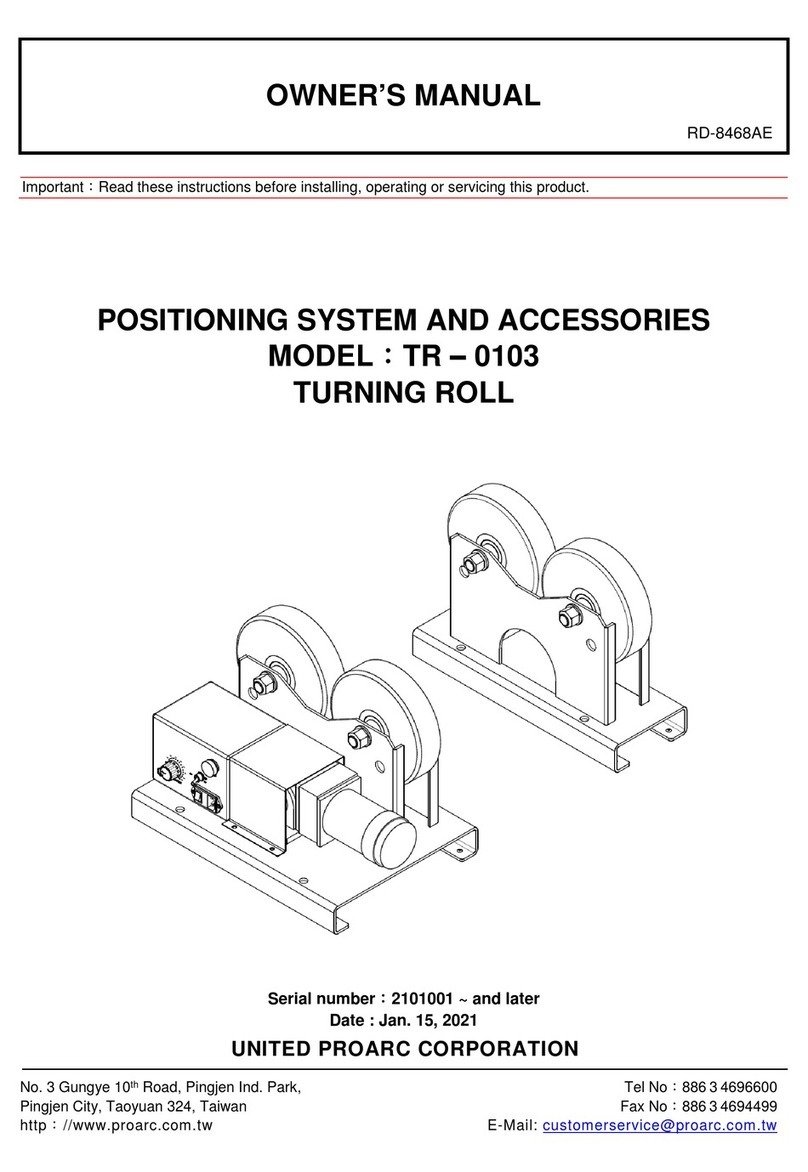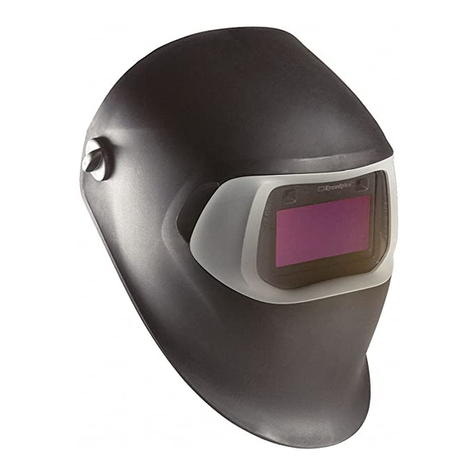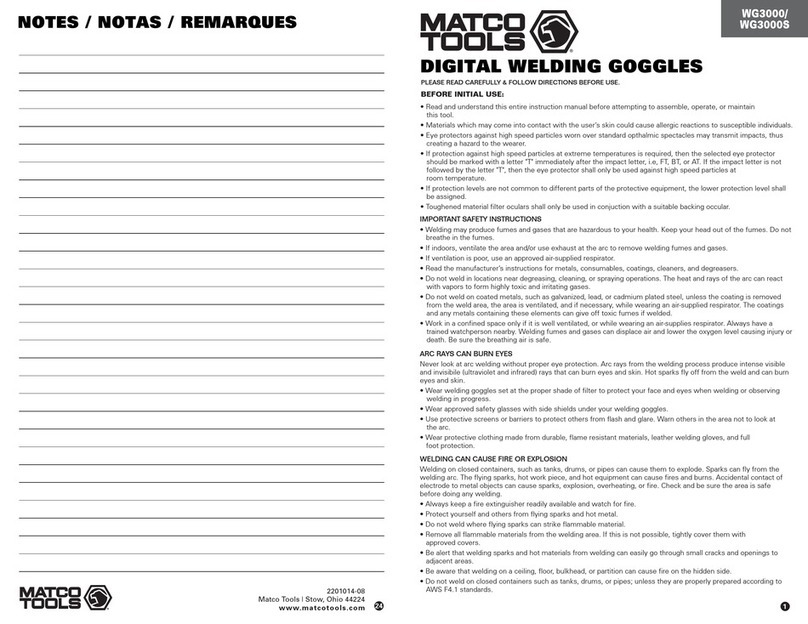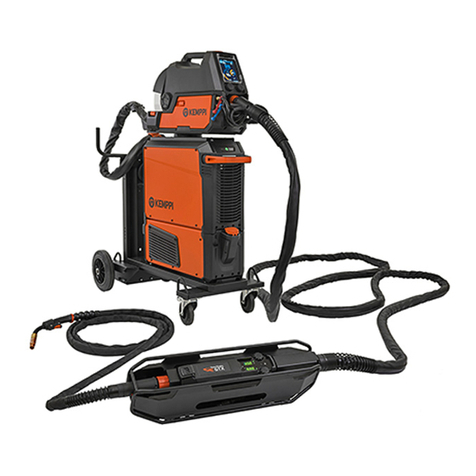Stark 55148 Original instruction manual

WELDING CUTTING TORCH KIT HARRIS TYPE
SAVE THIS MANUAL: KEEP THIS MANUAL FOR SAFETY WARNINGS, PRECAUTIONS, ASSEMBLY,
OPERATING, INSPECTION, MAINTENANCE AND CLEANING PROCEDURES. WRITE THE PRODUCT’S
SERIAL NUMBER ON THE BACK OF THE MANUAL NEAR THE ASSEMBLY DIAGRAM (OR MONTH
AND YEAR OF PURCHASE IF PRODUCT HAS NO NUMBER).
OWNER’S MANUAL AND SAFETY INSTRUCTIONS
ITEM: 55148
FOR QUESTIONS PLEASE CALL OUR CUSTOMER SUPPORT: (909) 628 4900 MON-FRI 9AM TO 3PM PST

GENERAL SAFETY WARNINGS
Read all safety warnings and instructions. Failure to follow the warnings and instructions may
result in electric shock, re and/or serious injury. Save all warnings and instructions for future
reference.
SAFETY
The warnings, precautions, and instructions discussed in this instruction manual cannot cover all
possible conditions and situations that may occur. It must be understood by the operator that common
sense and caution are factors which cannot be built into this product, but must be supplied by the
operator. Read carefully and understand all ASSEMBLY AND OPERATION INSTRUCTIONS before
operating. Failure to follow the safety rules and other basic safety precautions may result in serious
personal injury.
Stay alert, watch what you are doing, and use common sense when operating the tool. DO NOT use the
tool while you are tired or under the inuence of drugs, alcohol, or medication.
Dress properly. DO NOT wear loose clothing, dangling objects, or jewellery. Keep your hair, clothing
and gloves away from moving parts. Loose clothes, jewellery, or long hair can be caught in moving parts.
Wear the proper personal protective equipment when necessary. Use ANSI Z87.1 compliant safety
goggles (not safety glasses) with side shields, or when needed, a face shield. Use a dust mask in dusty
work conditions.
DO NOT overreach. Keep proper footing and balance at all times.
1
Read and understand all instructions. Failure to follow all instructions may result in serious injury or
property damage.
DO NOT allow persons to operate or assemble the product until they have read this manual and have
developed a thorough understanding of how it works.
DO NOT modify this product in any way. Unauthorized modication may impair the function and/or
safety and could affect the life of the product. There are specic applications for which the product was
designed.
Inspect the work area before each use. Keep work area clean, dry, free of clutter, and well lit. Cluttered,
wet, or dark work areas can result in injury. Using the product in conned work areas may put you
dangerously close to cutting tools and rotating parts.
DO NOT use the product where there is a risk of causing a re or an explosion; e.g., in the presence
of ammable liquids, gases, or dust. The product can create sparks, which may ignite the
ammable liquids, gases, or dust.
DO NOT allow the product to come into contact with an electrical source. The tool is not insulated
and contact will cause electrical shock.
Keep children and bystanders away from the work area while operating the tool. DO NOT allow
children to handle the product.
Be aware of all power lines, electrical circuits, water pipes, and other mechanical hazards in your
work area. Some of these hazards may be hidden from your view and may cause personal injury and/
or property damage if contacted.
IMPORTANT SAFETY INFORMATION

Remove keys or wrenches before connecting the tool to an air supply, power supply, or turning on the tool.
A wrench or key that is left attached to a rotating part of the tool may cause personal injury.
2
Check for damaged parts before each use. Carefully check that the product will operate properly and
perform its intended function. Replace damaged or worn parts immediately. Never operate the
product with a damaged part.
DO NOT use a product with a malfunctioning switch. Any power tool that cannot be controlled with the
power switch is dangerous and must be repaired by an authorized service representative
before using.
Disconnect the power/air supply from the product and place the switch in the locked or off position
before making any adjustments, changing accessories, or storing the tool. Such preventive safety
measures reduce the risk of starting the tool accidentally.
When possible, move the work to a location well away from combustible materials. If relocation is NOT
possible, protect the combustibles with a cover made of re resistant material. Remove or make safe all
combustible materials for a radius of 35 feet (10 meters) around the work area.
Enclose the work area with portable re resistant screens. Use a re resistant material to block all openings
and protect combustible walls, ceilings, oors, etc.
If working near/on a metal wall, ceiling, oor, etc., prevent ignition of combustibles on the other side
by moving the combustibles to a safe location. If relocation of combustibles is NOT possible, designate
someone to act as a re watch equipped with a re extinguisher during the welding or cutting process and
for at least one half hour after the welding or cutting project is completed.
DO NOT place the Torch on any material other than bare concrete until it has cooled completely.
DO NOT weld or cut any material that has a combustible coating or a combustible internal structure, such
as drums or tanks, without an approved method for eliminating the hazard.
DO NOT dispose of hot slag in containers holding combustible materials.
Keep a fully charged re extinguisher close by and know the proper way to use it.
After welding or cutting make a thorough check for evidence of re and be aware the easily visible ame
or smoke may not be present for some time after a re has started.
Clean and purge containers before applying heat. DO NOT apply heat to a container that has held an
unknown substance or a combustible material whose contents, when heated, can produce ammable or
explosive vapors. Vent closed containers, including castings, before preheating, cutting, or welding.
INHALATION HAZARD: Welding and Cutting Produce TOXIC FUMES. Exposure to welding or cutting
exhaust fumes can increase the risk of developing certain cancers, such as cancer of the larynx and lung
cancer. Also, some diseases that may be linked to exposure to welding or cutting exhaust fumes are: • Early
onset of Parkinson’s Disease • Heart disease • Ulcers • Damage to the reproductive organs • Inammation
of the small intestine or stomach • Kidney damage • Respiratory diseases such as emphysema, bronchitis,
or pneumonia Use natural or forced air ventilation and wear a respirator approved by NIOSH to protect
against the fumes produced to reduce the risk of developing the above illnesses.
WARNING: This product, when used for welding, plasma cutting, soldering, or similar applications,
produces chemicals known to the State of California to cause cancer and birth defects or other reproductive
harm. (California Health & Safety Code § 25249.5, et seq.)
WARNING: The brass components of this product contain lead, a chemical known to the State of California
to cause cancer and birth defects or other reproductive harm. (California Health & Safety Code § 25249.5,
et seq.)
IMPORTANT SAFETY INFORMATION

3
Make sure you are prepared to begin work before opening gas supply.
ALWAYS use reverse-ow on the torch and regulator. This greatly reduces the possibility of mixing
gases in the regulator or hose.
Use with oxygen and acetylene only. DO NOT modify this torch or use it for a purpose for which it is not
intended.
Set Acetylene Regulator no greater than 15 PSI. Acetylene is unstable and can explode if over-
pressurized.
DO NOT use oil, grease or thread seal tape on any connector.
Use clamps (not included) or other practical ways to secure and support the work piece to a stable
platform. Holding the work by hand or against your body is unstable and may lead to loss of control, re
and/or personal injury.
Use only accessories that are recommended by the manufacturer for your model Torch. Accessories that
may be suitable for one Torch may become hazardous when used on another Torch. Only use proper
gas hoses.
Proper cylinder care. Secure cylinders to a cart, wall or post to prevent them from falling. All cylinders
should be used and stored in an upright position. Never drop or strike a cylinder. Cylinder caps should
be used when moving or storing cylinders. Empty cylinders should be kept in specied areas and marked
“empty”
NEVER use oil or grease on any inlet connector, outlet connector or cylinder valves. Keep regulators
free of gas and oil.
There must be TWO O-rings on the cone end. The absence of either O-ring can lead to ashback within
the torch handle or cutting attachment.
DO NOT store cylinders in temperatures 120° F or higher.
KEEP WRENCH ON ACETYLENE CYLINDER’S VALVE whenever cylinder is in use to allow quick shut
off in case of emergency.
DO NOT USE FLAME TO DETECT LEAKS.
INSPECT BEFORE EVERY USE. Look for the following, and do not use kit if any damage is noted:
A. Inspect the tapered seating surfaces on the Nozzles and the Tip Nut. Have a qualied technician
resurface the seat area if it has dents, burrs, or is burned. A poor seating surface may result in backre
or ashback.
B. Examine all hoses for cuts, cracks, burns, worn areas, or other damage. Do not use if damaged.
C. Check for loose connections using soapy water solution. Tighten or repair any leaks found.
D. Do not use the Torch Kit if either gas does not turn off completely when the Oxygen Torch Valve and
Acetylene Torch Valve are closed. Leakage of gas from the tip is a substantial safety risk. If gas cannot
be turned off at the Torch Handle, it is dangerous and must be replaced.
E. Inspect for any other defects or damage. Do not use any damaged parts. Tag damaged parts “Do not
use” until repaired.
Backre and Flashback: When the ame goes out with a loud “pop” it is called a backre. Backre can
be caused by A. Operating the torch at low pressures required for the toll tips used. B. Touching the
tip against the work piece. C. Overheating the tip or abstraction in the tip. If backre occur, shut off the
torch handle valves, oxygen rst, and after remedying the cause, relight the torch. If ashback occurs,
close the torch handle valves immediately. Flashback generally indicates a problem that needs repaired.
A clogged tip, improper functioning in the valves or incorrect oxygen pressure. Make sure to nd and x
the cause before lighting the torch.
IMPORTANT SAFETY INFORMATION

4
PRODUCT SPECIFICATIONS
ASSEMBLY AND OPERATING PROCEDURES
NOTE: The following instructions are for acetylene gas use only. DO NOT use other fuel gases.
1. While standing on one side, “crack” each cylinder valve. “Cracking” is to
quickly open and close the valve, allowing gas to escape and clearing the
valve of any foreign material. If any oil or grease is found do not use the
cylinder and contact the supplier immediately.
2. Attach the GREEN oxygen regulator (Parts A1-A20E)) to the oxygen cylinder. Then, attach the RED
acetylene regulator (parts 1-19) to the acetylene cylinder. Make sure they are tightened in the correct
directions (normally clockwise for oxygen and counter-clockwise for acetylene) DO NOT USE THREAD
SEALING TAPE.
ASSEMBLY AND OPERATION

5
3. IMPORTANT: The pressure adjusting screw (18) on the acetylene regulator and the pressure adjusting
screw (A18) on the oxygen regulator should be turned counter-clockwise to relieve pressure on the
regulator diaphragms before opening the cylinder valves. If this is not done, pressure form the cylinders
may damage the diaphragms and render the regulators inoperable.
4. Connect the GREEN and RED welding hoses (1A or 1B) to the proper connections on the torch
handle (parts B1-B10)
5. Connect the cutting attachment (C1-C27) to the torch handle (B1-B10) Always check the cone end
(C23) and coupling nut (C22) for damage or oil. If either are found, discontinue use and contact your gas
supplier.
CUTTING ATTACHMENT (C1-C27)
COUPLING
NUT (C22) O-RING
(C24)
O-RING
(C25)
CONE END (C24)
FIGURE G
GREEN OX
WELDING HOSE (1A)
CUTTING ATTACHMENT (C1-C27)
RED AC WELDING
HOSE (1B)
TORCH HANDLE
FIGURE H
FIGURE F
6. Check connections for leaks. Adjust the acetylene regulator (parts 1-19) and oxygen regulator (parts
A1-A20E) to their normal operating pressure. Use an approved leak detection solution to check for leaks
at the welding hoses (A1 and 1B) and cylinder valve connections. If leaks are fond, tighten nuts more
securely.
ASSEMBLY AND OPERATION

6
1. After everything is connected, close both Torch Handle Valves, turning clockwise. Close Regulators,
turning knobs counter-clockwise until loose.
2. Open the cylinder valves turning counter-clockwise only until the gas starts owing. WARNING! Only
open Acetylene Cylinder Valve 1/4 to 1/2 turn.
3. Open the Oxygen cylinder valve completely, turning it counter-clockwise.
4. Adjust the Oxygen Regulator to deliver 20 PSI. Adjust the Acetylene Regulator to deliver 10 PSI.
DO NOT EXCEED 15 PSI ACETYLENE PRESSURE.
5. Check all connections for leaks using soapy water: • If leaks are found, tighten connections. • If a leak
persists, discontinue use and call gas supplier. • If no leaks are found with this test, move on to the Gauge
Monitoring test.
DANGER! To prevent serious injury and/or death, DO NOT tighten or adjust
any connection between the cylinder and cylinder valve, or force the cylinder
valve. If the cylinder valve is leaking, move the cylinder outside and notify
your gas supplier immediately.
CHECKING FOR LEAKS

NEVER set the Acetylene Regulator (Parts 1-19) to a delivery pressure above 15 PSI.
See gures I, J and K
FIGURE I
FIGURE J
WELDING TIP CHART
OXYACETYLENE MULTI-FLAME HEATING CHART
OXYACETYLENE CUTTING NOZZLE CHART
FIGURE K
9. To determine the proper acetylene regulator parts (parts 1-19) pressure and oxygen regulator (parts
A1-A20E) pressure for neutral ame adjusting. Refer to Figures I and K
10. Depending on use, attach either the cutting nozzle (D6) or welding nozzle (D3) to the cutting attachment
(parts C1-C27) See gure L
11. Open the oxygen control valve (B8 with Ox label B9) on the torch handle. Open the pre-heat oxygen
valve (C26) on the cutting attachment. Adjust the oxygen regulator parts (A1 - A20) to the desired working
pressure. Then close the oxygen control valve on the torch handle. See gure L
7
CHARTS

PRE-HEAT OXYGEN
CONTROL VALVE
(C26)
CUTTING
NOZZLE (D6)
ACETYLENE
CONTROL VALVE
(B10)
OXYGEN CONTROL
VALVE (B8)
HIGH PRESSURE
LEVEL (C20)
FIGURE L
12. Open the acetylene control valve (B8 with AC label (B10) on the torch handle. Adjust the acetylene
regulator (parts 1-19) to the desired working pressure. Then close the acetylene control valve on the torch
handle. See gures E and L
13. Hold the torch handle (parts B1-B10) in one hand and the int lighter (D9) in the other hand. See gure
M.
FIGURE M
14. Open the acetylene control valve (B8 and AC label B10) about a 1/4 turn and ignite the acetylene gas
coming out of the nozzle (part D3, D6) Always point the nozzle away from other people when lighting.
15. Slowly open the acetylene control valve (B8 and AC label B10) further until the smoke subsides and
the ame jumps away from the end of the nozzle (part D3, D6) slightly. See gure M
16. Slowly open the oxygen control valve (B8 with OX label B9) until a brilliant neutral ame is reached. If
the ame has a smooth inner cone, the ame is called neutral. See gure N
Always use the appropriate welding goggles or welding helmet when welding or
cutting.
NOZZLE PARTS (D6)
ACETYLENE
CONTROL VALVE
(B8 WITH AC LEVEL
B10)
OXYGEN CONTROL
VALVE (B8 WITH OX
LABEL B9)
FIGURE N
8
OPERATION

9
17. Once the welding or cutting job is completed, turn off the oxygen control valve (B8 with OX label B9)
Then turn off the acetylene control valve (B8 with AC label B10)
NOTE: Reversal of this procedure may cause damage to the torch handle (parts B1-B10. See gure N
18. Shut off both cylinder valves. See gure E
19. Drain the gas from the oxygen regulator parts (A1-A20E) by opening the oxygen control valve (B8 with
OX label B9) Repeat this step on the acetylene side. See gure N
20. Release the pressure on the acetylene and oxygen regulators by turning their pressure adjusting
screws (18, A18) counter-clockwise. See gure E
INSPECTION, MAINTENANCE AND CLEANING
Make sure the welding kit is cool to the touch and disconnected from
its oxygen and acetylene cylinders before performing any inspection,
maintenance or cleaning procedures.
1. BEFORE EACH USE, inspect the general condition of the welding kit. Check for loose screws,
misalignment or binding of moving parts, cracked or broken parts, damaged welding hoses and any other
condition that may affect its safe operation. If a problem occurs, have the problem corrected before further
use. DO NOT USE DAMAGED EQUIPMENT.
2. PERIODICALLY, Use the tip cleaner (D7) to clean out dirt and debris from the nozzles (parts D3, D6)
make sure to use the correct size tip cleaner for each individual nozzle. See assembly diagram
3. TO CLEAN, use a cloth. If necessary, a mild detergent may be used. Do not immerse any part of the
welding kit in liquid. Do not use solvents or other ammable agents to clean the welding kit.
MAINTENANCE

10
ACETYLENE REGULATOR PARTS LIST
NOTE: Some parts are listed and shown for illustrations purposes only and are not available individually
as parts.
PARTS LIST

OXYGEN REGULATOR PARTS LIST
11
NOTE: Some parts are listed and shown for illustrations purposes only and are not available individually
as parts.
PARTS

12
TORCH HANDLE PARTS LIST
PARTS

CUTTING ATTACHMENT PARTS LIST
13
PARTS

14
ACCESSORY PARTS LIST
1A
1B
3
6
7
8
9
PARTS

15
THE MANUFACTURER AND/OR DISTRIBUTOR HAS PROVIDED THE PARTS LIST AND ASSEMBLY
DIAGRAM IN THIS MANUAL AS A REFERENCE TOOL ONLY. NEITHER THE MANUFACTURER OR
DISTRIBUTOR MAKES ANY REPRESENTATION OR WARRANTY OF ANY KIND TO THE BUYER THAT
HE OR SHE IS QUALIFIED TO MAKE ANY REPAIRS TO THE PRODUCT, OR THAT HE OR SHE IS
QUALIFIED TO REPLACE ANY PARTS OF THE PRODUCT. IN FACT, THE MANUFACTURER AND/OR
DISTRIBUTOR EXPRESSLY STATES THAT ALL REPAIRS AND PARTS REPLACEMENTS SHOULD BE
UNDERTAKEN BY CERTIFIED AND LICENSED TECHNICIANS, AND NOT BY THE BUYER. THE BUYER
ASSUMES ALL RISK AND LIABILITY ARISING OUT OF HIS OR HER REPAIRS TO THE ORIGINAL
PRODUCT OR REPLACEMENT PARTS THERETO, OR ARISING OUT OF HIS OR HER INSTALLATION
OF REPLACEMENT PARTS THERETO.
Record Product’s Serial Number Here:
Note: If product has no serial number, record month and year of purchase instead.
Note: Some parts are listed and shown for illustration purposes only and are not available individually
as replacement parts.
PLEASE READ THE FOLLOWING CAREFULLY
WARRANTY
PRODUCT MADE IN CHINA
Table of contents
Popular Welding Accessories manuals by other brands
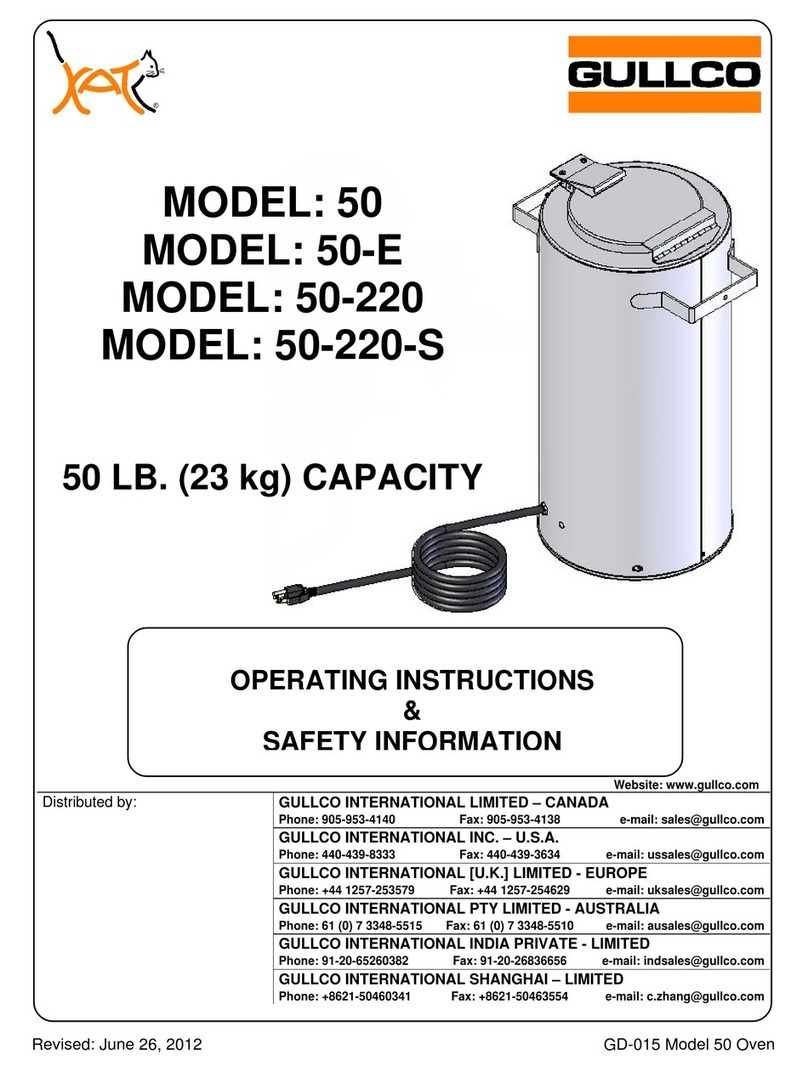
GULLCO
GULLCO 50 Operating instructions & safety information
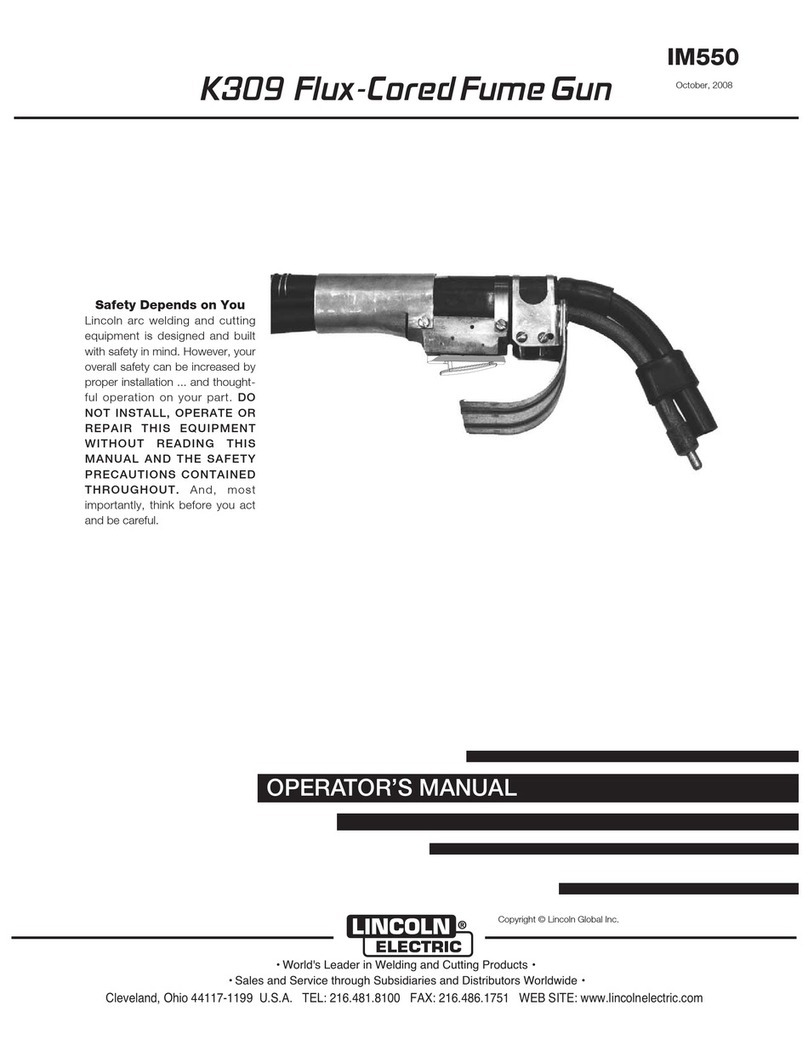
Lincoln Electric
Lincoln Electric K309 Operator's manual
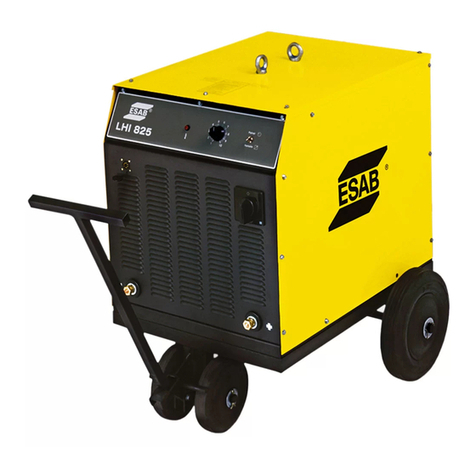
ESAB
ESAB LHI 825 instruction manual
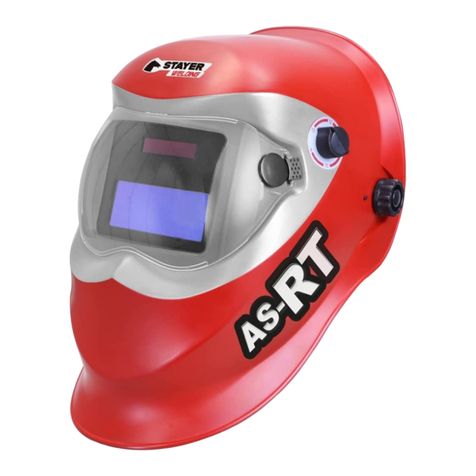
STAYER WELDING
STAYER WELDING AS-1D operating instructions

Right Weigh
Right Weigh 231-SK installation manual
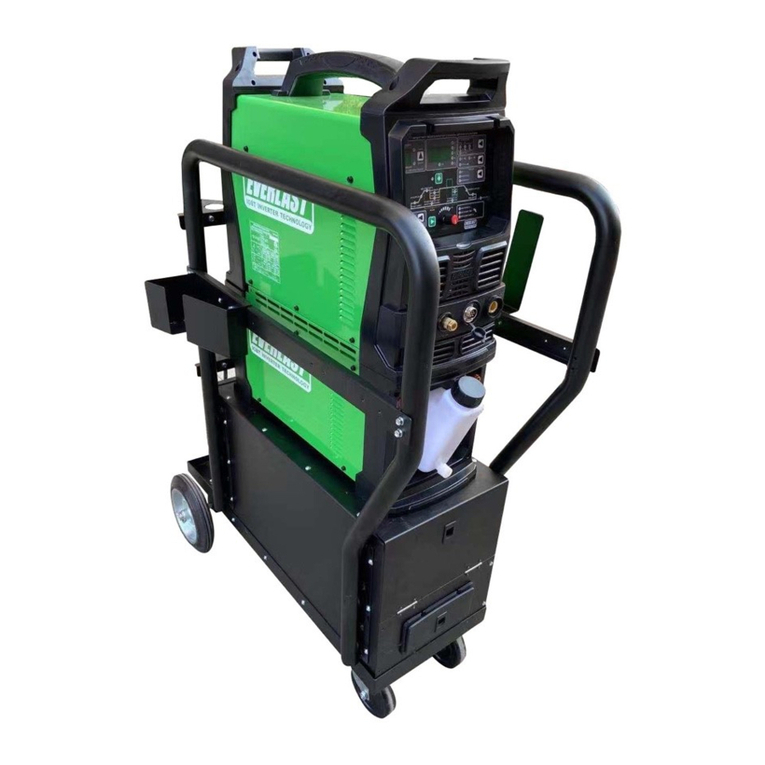
Everlast
Everlast PowerCart 330 Assembly and Use Information
